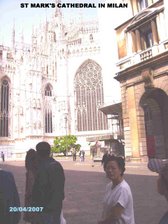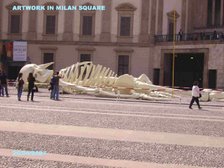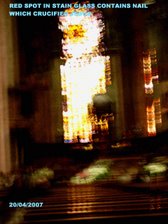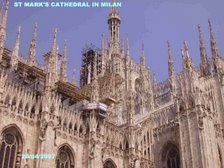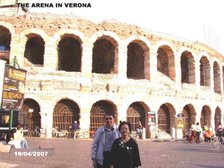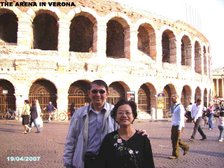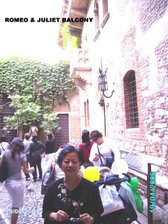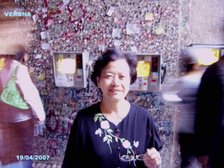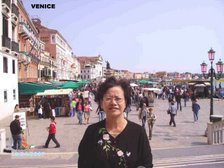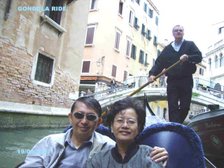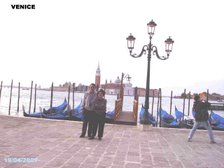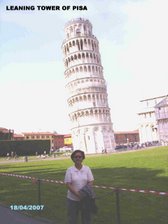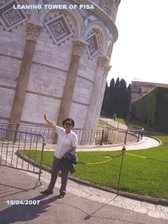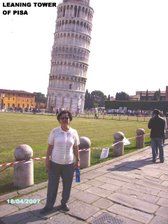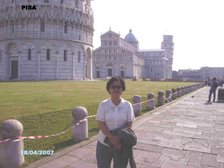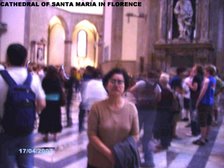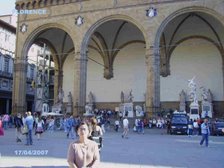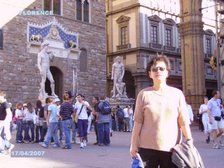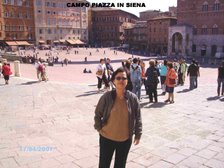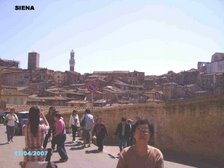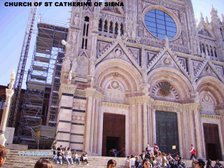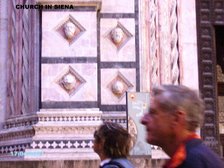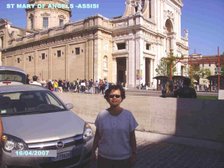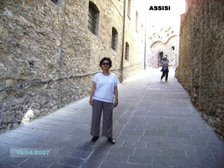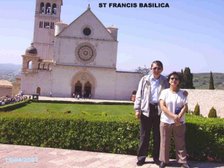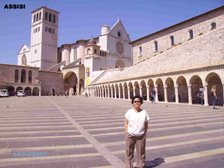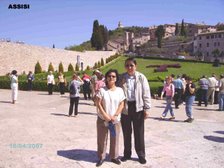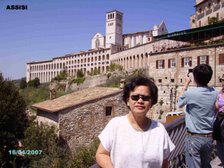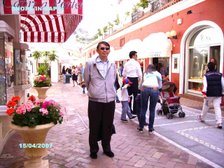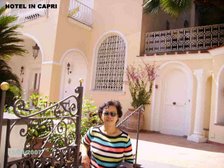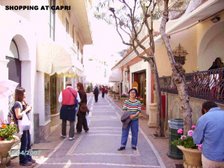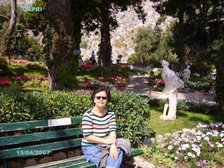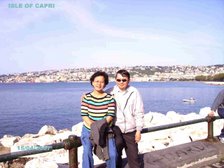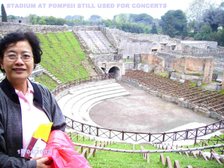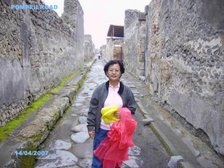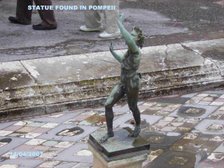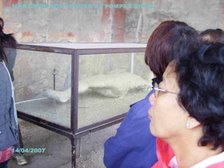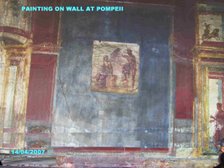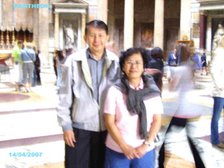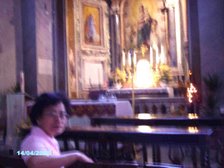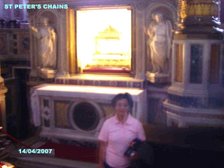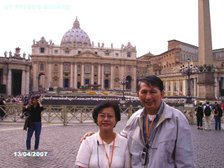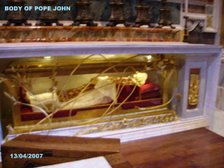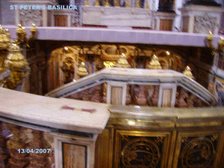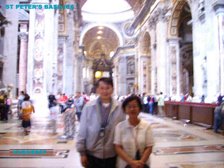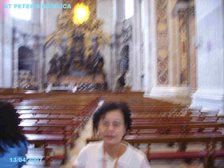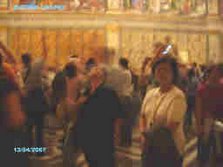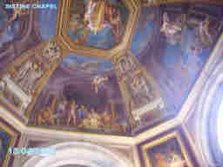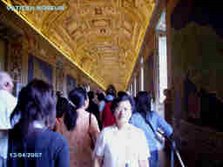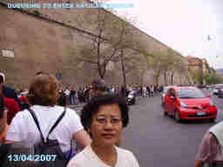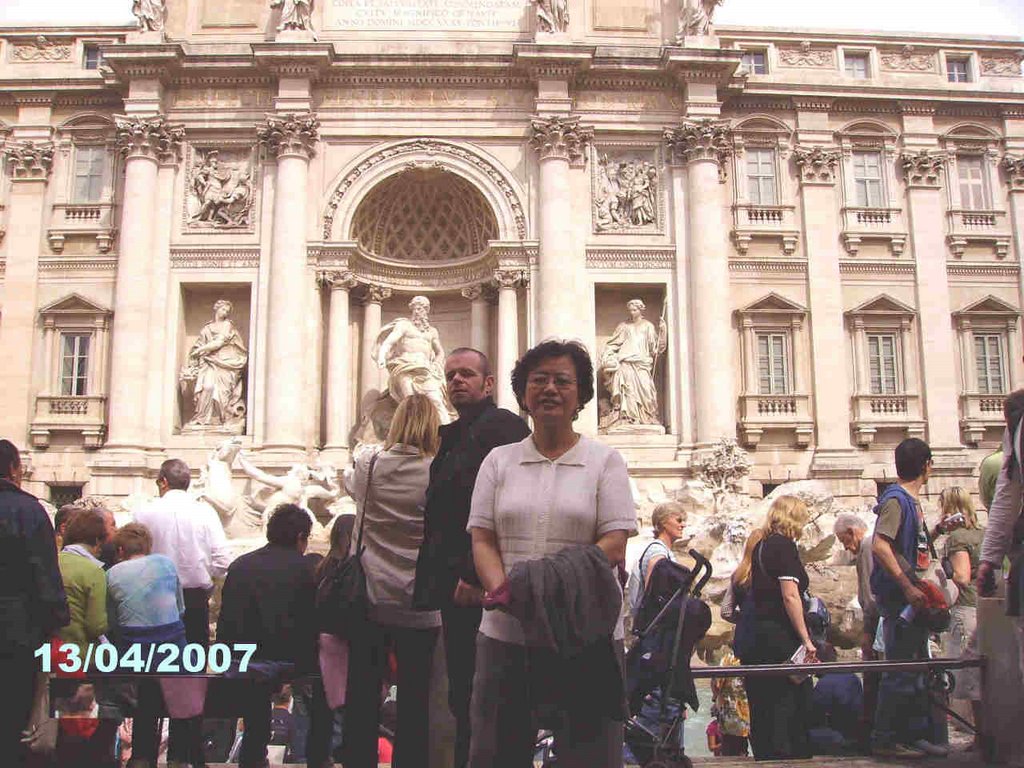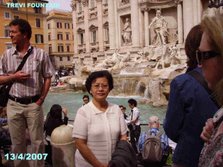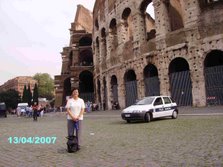OUR TRIP TO ITALY APRIL 2007 - SIENA
From ASSISI we travel to the medieval city of SIENA
Siena is a city in Tuscany, Italy. It is the capital of the province of Siena.The historic center of Siena has been declared by UNESCO a World Heritage Site.
Siena like other Tuscan hill towns, was first settled in the time of the Etruscans (c. 900 BC to 400 BC) when it was inhabited by a tribe called the Saina. The Etruscans were an advanced people who changed the face of central Italy through their use of irrigation to reclaim previously unfarmable land, and their custom of building their settlements in well-defended hill-forts. .
The Roman origin accounts for the town's emblem – a she-wolf suckling the infants Romulus and Remus. According to legend, Siena was founded by Senius, son of Remus, who was in turn the brother of Romulus, after whom Rome was named. Statues and other artwork depicting a she-wolf suckling the young twins Romulus and Remus can be seen all over the city of Siena. Siena did not prosper under Roman rule. It was not sited near any major roads and therefore missed out on the resulting opportunities for trade. Its insular status meant that Christianity did not penetrate until the fourth century AD, and it was not until the Lombards invaded Siena and the surrounding territory that it knew prosperity. Their occupation and the fact that the old Roman roads of Aurelia and the Cassia passed through areas exposed to Byzantine raids, caused the roads between the Lombards' northern possessions and Rome to be re-routed through Siena. The inevitable consequence of this was that Siena prospered as a trading post, and the constant streams of pilgrims passing to and from Rome were to prove a valuable source of income in the centuries to come.
It was during the 1100s that the majority of the construction of the Duomo, Siena's cathedral, was completed. It was also during this period that the Piazza del Campo, now regarded as one of the most beautiful civic spaces in Europe, grew in importance as the centre of secular life. New streets were constructed leading to it and it served as the site of the market, and the location of various sporting events . On September 4, 1260 The Senese Ghibellines, supported by the forces of King Manfred of Sicily, defeated the Florentine Guelphs at Montaperti. The Senese faced an overwhelming Florentine army. Prior to the battle, the entire city was dedicated to the Virgin Mary and entrusted to her possession – something which has been renewed several times since, most recently in 1944 to guard the city from the threat of Allied bombs. The man given command of Siena for the duration of the war, Bonaguida Lucari, walked barefoot and bareheaded, a halter around his neck, to the Duomo. Leading a procession composed of all the city's residents, he was met by all the clergy. Lucari and the Bishop embraced, to show the unity of church and state, then Lucari formally gave the city and contrade to the Virgin. Legend has it that a thick white cloud descended on the battlefield, giving the Senese cover and aiding their attack. They inflicted a crushing defeat and massacred the forces of their enemy,so crushing was the defeat that even today if the two cities meet in any sporting event, the Senese supporters are likely to exhort their Florentine counterparts to “Remember Montaperti!”.
Siena's university, founded in 1203 and famed for its faculties of law and medicine, is still among the most important Italian universities. Siena was devastated by the Black Death of 1348, and also suffered from ill-fated financial enterprises.
On the Piazza Salimbeni is the Palazzo Salimbeni, a notable building and also the medieval headquarters of Monte dei Paschi di Siena, one of the oldest banks in continuous existence and a major player in the Sienese economy.
Siena's cathedral, the Duomo, begun in the twelfth century, is one of the great examples of Italian romanesque architecture. Its main facade was completed in 1380. Its campanile and baptistery make a fine group. It is unique among Christian cathedrals in that its axis runs north-south. This is because it was originally intended to be the largest cathedral in existence, with a north-south transept and an east-west aisle, as is usual.
Inside is the famous Gothic octagonal pulpit by Nicola Pisano (1266–1268) supported on lions, and the labyrinth inlaid in the flooring, traversed by penitents on their knees. Also present near the pulpit was the head of St Catherine of Siena. Her body however remains in Rome.
Sanctuary of Santa Caterina, incorporating the old house of St. Catherine of Siena. It houses the miraculous Crucifix (late 12th century) from which the saint received her stigmata, and a 15th century statue of St. Catherine.
The shell-shaped Piazza del Campo, the town square, which houses the Palazzo Pubblico and the Torre del Mangia, is another architectural treasure, and is famous for hosting the Palio horse race.
July 2 and August 16 are the dates when the "Palio" is held. The Palio is a traditional horse race which is run around the Piazza del Campo each year. This event is attended by large crowds, and is widely televised.


